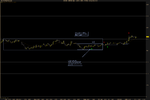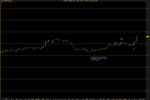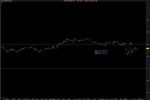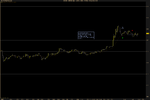BLS
Established member
- Messages
- 642
- Likes
- 229
Can anyone please tell me at what level they set their targets and stops given the spread/commission of their broker?
My broker offers a spread that usually sits between 0 and 0.3 of a pip, then I pay 0.7 pip per round turn. At the moment I set my target to 10 pip (receiving 9.3 pip profit on a winning trade) and maximum stop at 8.6 (risking up to 9.3 pip).
Do others increase their target to compensate? E.g. I could set my target to 10.7 and thus receive 10 pip of profit on a winner.
Thanks again everyone
I do adjust my profit target to take commission into consideration although I think it would be much easier on me if I didn't. I think it's a bit of greed on my part that I add 0.8 pip to my profit target (10.8 target, 9.2 stop) to cover the cost of commission since I see a lot of trades exceed the 10 pip limit. But it does make calculating risk (in terms of percentage of your account) easier since your max loss and gain is 10 pip. For your situation I think you could get away with setting your target to 10.7. Since your max spread is 0.3, if you add the 0.7 in commission cost, it's like having a 1 pip spread which is what Volman assumes when he teaches his method. Which broker do you use?








